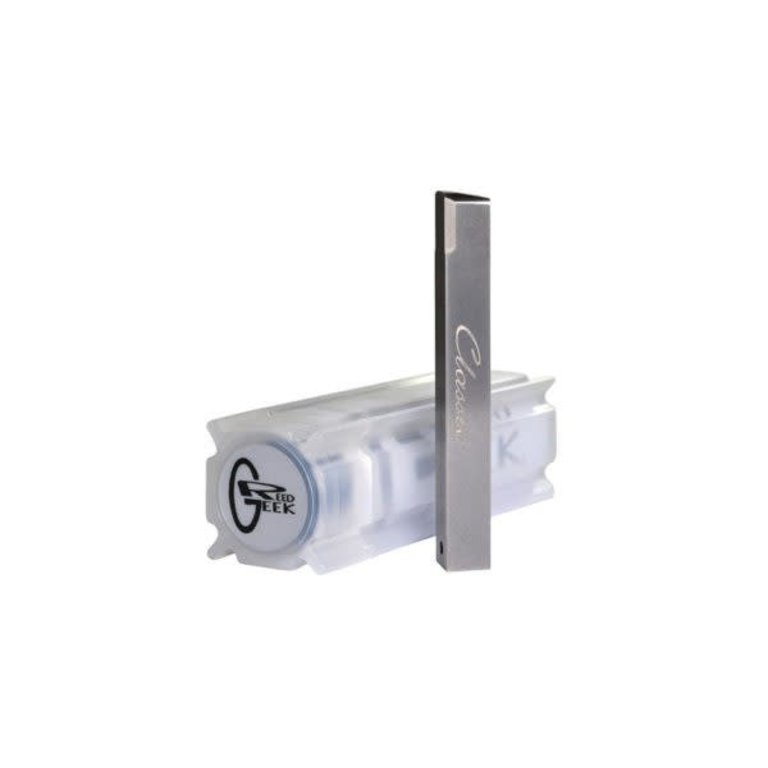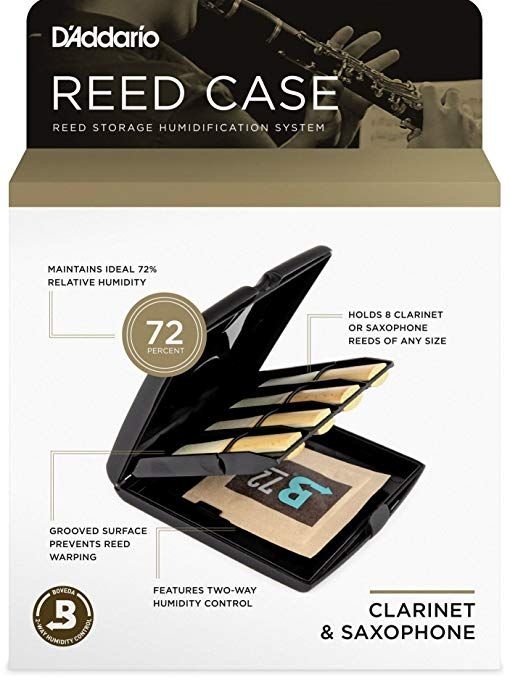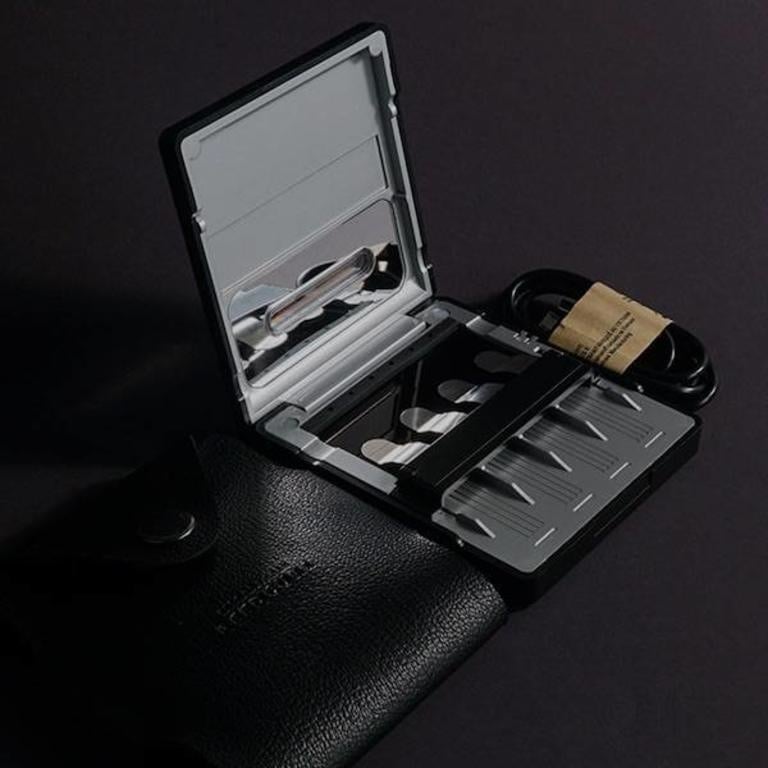

Login
Log in if you have an account
Register
By creating an account with our store, you will be able to move through the checkout process faster, store multiple addresses, view and track your orders in your account, and more.
Create an account10 Tips to make your reeds last longer

Woodwind instruments like the clarinet, the saxophone, the oboe and the bassoon are dependent on tiny wooden pieces called reeds. Instrument like the saxophone and the clarinet use single reeds and to play the oboe or the bassoon you will need a double reed. Interesting fact, each read take up to 5 years to grow and to be made into the reeds we used to play our instruments.
Clarinet and saxophone reeds are measured using a number from 1 to 5 to scale their density and hence, their difficulty to be played. A reed size 2.5 and less is considered rather soft (easy) and a reed 3.5 and above is quite strong (and harder to play). For oboe and bassoon, reeds are ranked soft to hard with the intermediate levels of medium soft, medium and medium hard.
The maintenance and care of reeds are very important for woodwind musicians and once mastered, they can help save a lot of money. Futhermore, reeds that are cared for help to obtain a better sound.
Here are 10 tips we gathered from professional musicians that can help you level up your reed-care game!
1. Find the right strength, cut and reed brand
This step alone can take years to achieve simply because there are numerous brands, sizes and cuts for reeds and because your morphological features are absolutely unique to you. We often compare finding the right reed to finding a good pair of shoes : your comfort and your preferences are defined by YOU which means it's very important that you take the time to experiment and explore all the products available to you.
With time you'll find the right reed, and eventually your technique or equipment will upgrade which means you will repeat the exercise and find a new reed you prefer. Even professional musicians change periodically to adjust to their new reality. Like with your shoes, your needs will change and you will outgrow your favourite old pair of sneakers.
Where to begin? If you are only starting to play saxophone or clarinet try reeds size 2 or 2.5 from brands like Rico (D'Addario) or Vandoren. If you are a beginner oboe or bassoon player try the Jones medium soft.
With time and experience, you will eventually go for stronger reeds but you need to start with softer ones. You can ask our sales associates in store to assess your needs!
2. Sort the good ones from the bad ones
In a box of 5 or 10 reeds, unfortunately reeds won't all be made equal. Some will be good and some will need a bit of work. Using a light source, try to see the variation in opacity within your reed. Does it seem pretty consistent or are there any very dark or very light spots? Reeds with consistent density will be easier to play.
Remi Bolduc (saxophone) always sorts his reeds (D'Addario 3Hard Jazz Select) by giving them a score from 1 to 8. Reed #1 is the softest and #8 the hardest of the same box and he will play all of them daily. He will, however, choose the reeds ranked #4 and #5 for important concerts.
Laurence Neil-Poirier (clarinet), owns even a couple of reed cases and she puts in the first one the reeds that need a lot of work, in the second the ones that are ready to play and in the third one the reeds that are very new and need to mature a bit. She uses Vandoren V12 strength 3.5 or Vandoren V21 strength 3.
The change of season brings its lot of problems for woodwind players including humidity changes and large variation in temperature. These changes can be damageable for reeds and a humidity-controlled case can come in handy. The D'Addario Reed Case with humidity pockets (also available for oboe and bassoon) is probably by far the most popular but you can also check the Hygro Reed Case from Vandoren.
Tip : Be more careful during the winter season to the needs of your instruments and reeds because of the electric heating. It can be very harmful.
4. Switch often between reeds
It's very common in the woodwind world to talk about often switching reeds during a practice session or a rehearsal. By using each reed a bit every day, you will stretch their life expectancy by weeks. It is advised to play and alternate with every reed you currently have opened every day and with this technique, players can make their reeds last up to 5 months.
Some professional musicians like Rémi Bolduc switch between 8 reeds daily to keep in shape a vast reserve or reeds that are concert ready.
Bassoon and oboe player will even have reeds dedicated exclusively to concerts.
5. Do not "burn" a new reed
When you open the package of a new reed for the first time, do not go ahead and practise for 2 hours! You will completely ruin the fibres of the wood and "burn it" in a sense. Instead, warm-up gently and put it back. Let the reed get used to the vibration slowly, you will be able to keep it for a longer time.
Tip: Let your reeds rest in a small water container for a couple of minutes before playing.
There is a lot you can do to prevent mold or harmful bacteria to thrive on your reeds. You can soak gently your reeds in mouthwash or use the REEDCURE by Silverstein Works to be absolutely certain that your reeds are as good as new and free of all harmful germs.
7. Let the reed rest
Do not play more than an hour with the same reed to allow the wood's fibres to rest.
8. Advanced maintenance techniques
You can push your reed-care game to another level by using a reed cutter to trim the edges of your tired reeds. This technique can't be used forever but will pushback the day you will have to part with your favourite reed.
Certain musicians will use the ReedGeek tool to modify faulty reeds at the beginning. This technique can be risky at first (for the reeds) but eventually can save you a couple of bucks. The ReedGeek is mainly used to thin reeds that are a bit too strong, by removing the surplus of wood on the side which will be put against the mouthpiece.
 9. Advanced double reed advice - Let the reed evolve!
9. Advanced double reed advice - Let the reed evolve!
For double reed players, you will almost always have some work to do on your reed before you reach a concert-ready reed. When you are working on your reed, be sure that your technique is good on the long run and sustainable on a long period of time. Do not remove too much wood at first, and take the time to tame your reed and let it evolve with you.
Tip : Always soak your reeds before you play. The ideal soaking time is what it takes you to assemble your instrument and get your music out. At the end, be sure to leave enough time to let them dry a bit to prevent mold forming inside.
Tip : Your double reed has a right and wrong side! Both sides aren't equal and the longer one should be the one touching your upper lip.
 10. Special double reed advice - Choose your cane wisely!
10. Special double reed advice - Choose your cane wisely!
If you are at a time where you are making your own double reeds (it's very usual for oboe and bassoon players to make their own reeds), be careful of cracks and irregularities in the wood. A good piece of cane will have a similar texture and thickness everywhere.
On a more advanced level, you can even purchase a hardness tester, which will test the density of the piece for you. The desired density will vary depending on the player.
Tip : A double reed with big openings on the sides and a closed top will need more soaking time. A double reed will a large aperture at the top will need minimal soaking time (30 seconds to a minute).
If you wish to escape the whims of wooden reeds, you can always try synthetic reeds available for all clarinets, saxophones, oboes and bassoons.
We want to thank all of our precious collaborators who helped us write this article :
Élisabeth Provencher | Saxophone player, Composer and teacher| EP Quintet
Rémi Bolduc | Saxophone player, Composer, Associate Professor at the Schulich School of Music of McGill University, Yamaha Artist, D'Addario Artist | Rémi Bolduc Jazz Ensemble.
Pascal Bard | Saxophone player, Composer and Sales Associate at Twigg Musique.
Léanne Teran-Paul | Oboe player at the Conservatoire de Musique de Montréal and teacher
Marlène Ngalissamy | Bassoon player, alumni of the CURTIS Music Institute and the Conservatoire de Musique de Montréal
Laurence Neil-Poirier | Clarinet Player and teacher at École Secondaire Joseph-François Perreault and Collège Notre-Dame.
Meaghan Luttrell | Clarinet Player at the Conservatoire de Musique de Montréal and Sales Associate at Twigg Musique.




